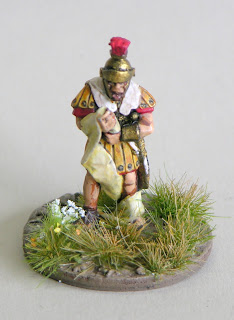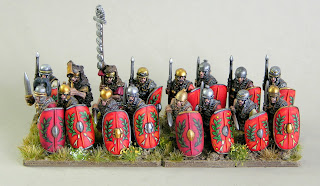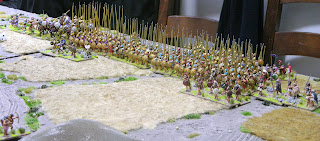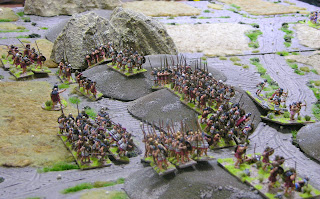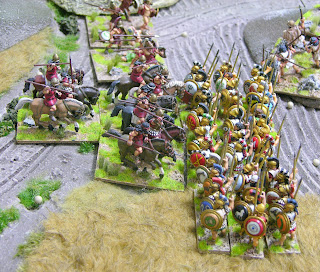I've just started to get my mind around the Asculum game that various chums and I propose to run next year (probably at Partizan, in May).
Asculum 279BC was a classic Successor vs. Roman battle, which conveniently includes lots of pikes, legionaries, elephants and anti-elephant secret weapons. Plus it ties in nicely with the spiffing range of miniatures that Aventine are producing... Rule set likely to be Hail Caesar.
Below are the very broad brushstrokes of the OOB, based on the Pen and Sword "Pyrrhus of Epirus" book, scaled to 1/100.
| Romans | Figures | ||||
| Allied Legionaries | 20000 | 200 | |||
| Roman Legionaries | 20000 | 200 | |||
| Other allies | 30000 | 300 | |||
| Cavalry | 8000 | 80 | |||
| Anti elephant carts | 8 | ||||
| Pyrrhics | |||||
| Macedonian and Epirot pikemen | 20000 | 200 | |||
| Greeks | 16000 | 160 | |||
| Samnites | 34000 | 340 | |||
| Cavalry | 8000 | 80 | |||
| Elephants | 19 | 8 | |||
| 1576 |
My first thoughts are that, as it stands, it is very do-able as we have enough Romans (although not the leves), from Zama, and enough pikemen. We are probably only short of the Southern Italian and Samnite infantry, and cavalry.
My concern is that it doesn't give enough scope to use quite a lot of the figures that we already have painted; Craig and Aventine Keith, between them, already have a lot more pikes than we would need (let alone mine).
I'm somewhat tempted to up the ante by doubling up to 1:50 scale (keeping the number of nellies and carts fixed), even if it means that we have to use Carthaginians, perhaps, to represent some of the allies. I'll have to see how it goes; whether I can, perhaps, produce a Roman legion, or two, m'self...






